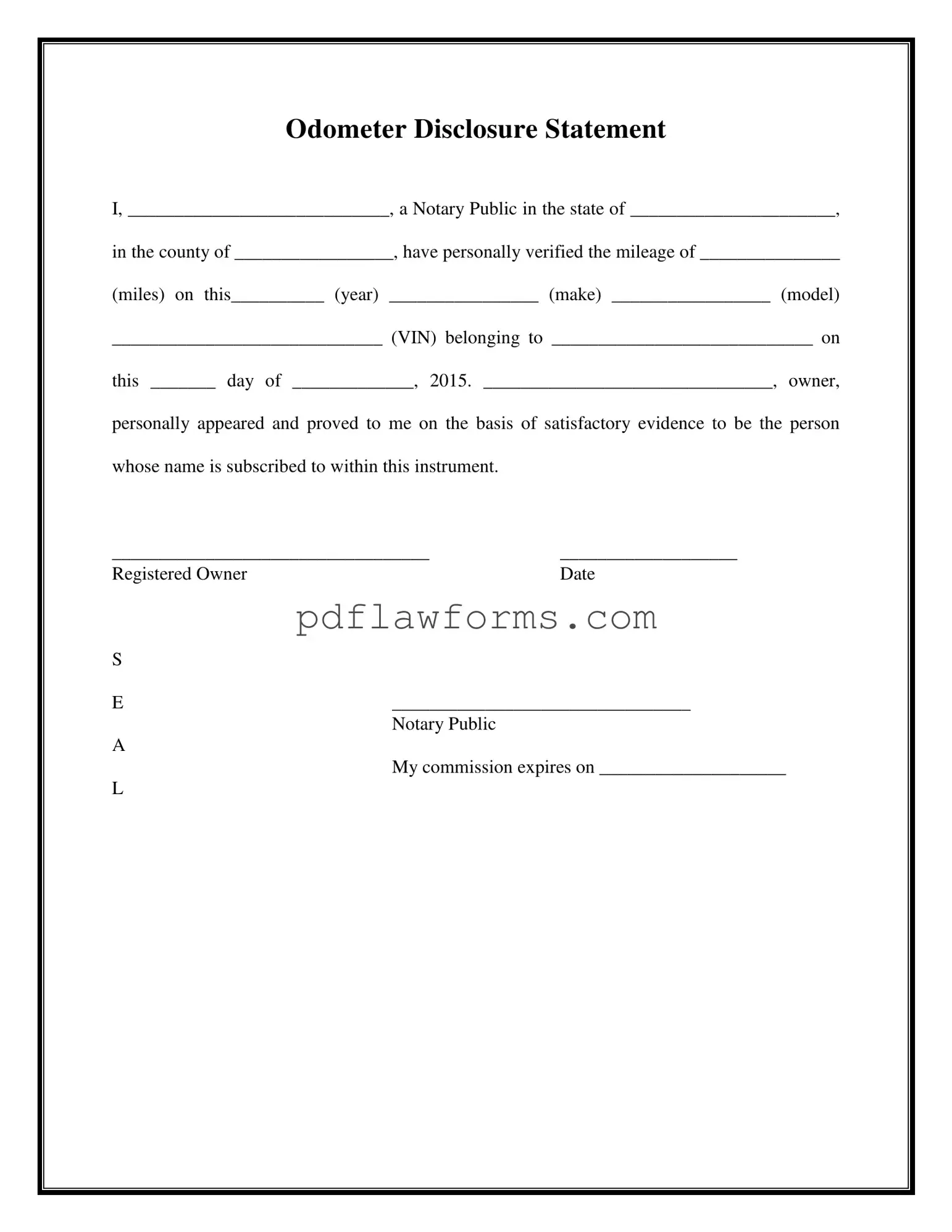When filling out the Notarized Odometer Statement form, many individuals make common mistakes that can lead to delays or complications. One frequent error is leaving the name of the registered owner blank. This information is crucial for identifying the person responsible for the vehicle. Ensure that the full name is clearly printed in the designated area.
Another mistake often made is failing to provide the correct mileage. The mileage must accurately reflect the vehicle's current reading. If the mileage is incorrect, it could raise questions about the vehicle's history and condition. Double-check the odometer reading before finalizing the form.
People sometimes overlook the vehicle identification number (VIN). The VIN is a unique identifier for the vehicle and must be included without error. A missing or incorrect VIN can lead to issues with registration or title transfer. Take the time to verify the VIN against the vehicle's documentation.
Additionally, individuals may forget to include the year, make, and model of the vehicle. This information is essential for the proper identification of the vehicle. Ensure that each of these details is filled out accurately to avoid confusion.
Notarization is a critical step in this process. Some individuals fail to schedule an appointment with a notary public. The form must be notarized to be valid. Make sure to arrange for notarization before submitting the document.
Another common oversight is neglecting to sign the form. The owner's signature is required to authenticate the document. Without a signature, the form cannot be considered complete. Always review the form to confirm that all necessary signatures are present.
People may also misinterpret the date format. The date should clearly indicate the day, month, and year. Using an incorrect format can lead to misunderstandings. Be consistent with the date format used throughout the document.
Lastly, failing to check for any additional requirements specific to your state can cause problems. Each state may have unique regulations regarding the Notarized Odometer Statement. Research your state's requirements to ensure compliance and avoid unnecessary complications.
